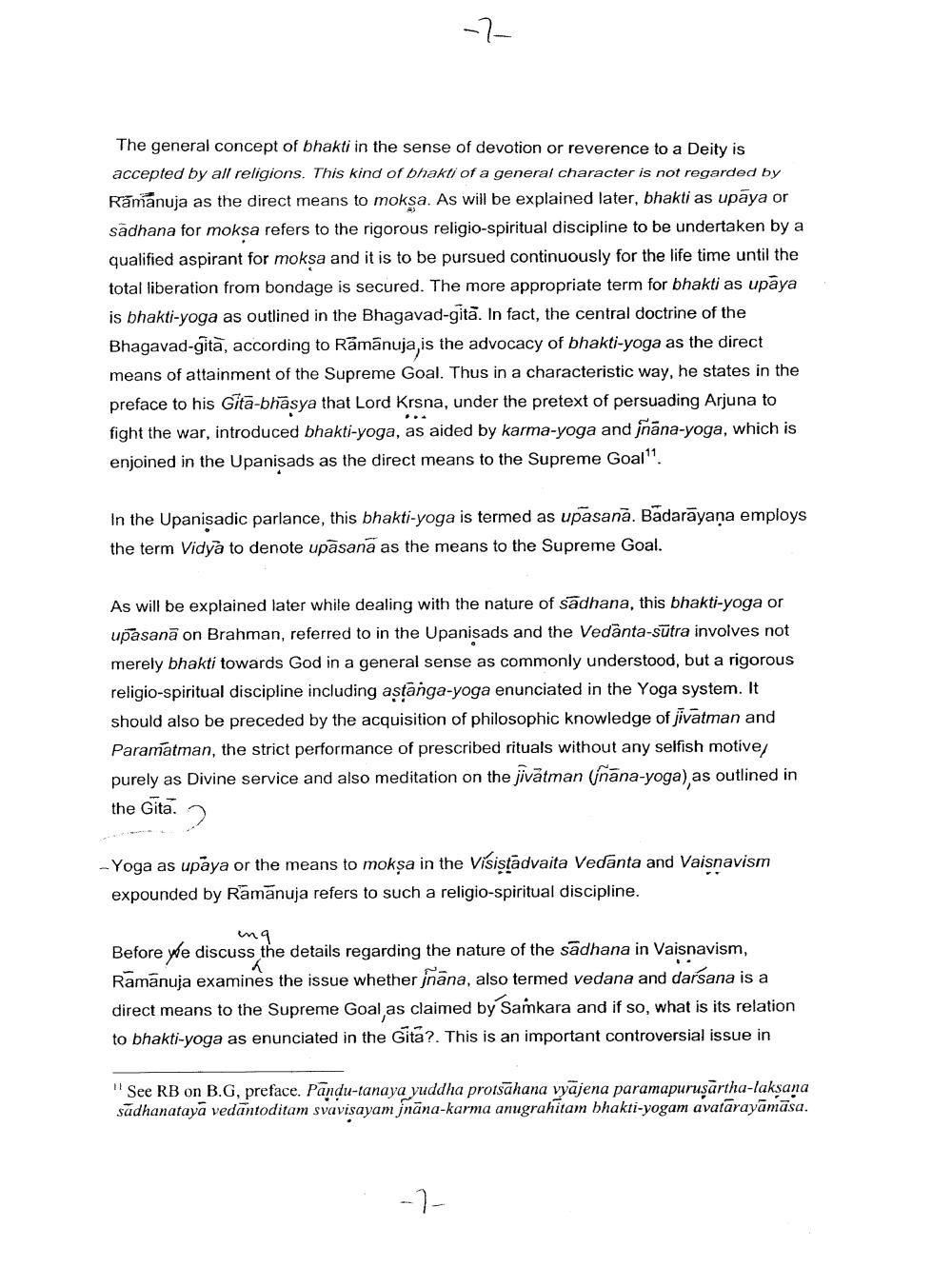Book Title: Synthesis of Yoga in Vaisnavism of Ramanuja Author(s): Publisher: View full book textPage 7
________________ The general concept of bhakti in the sense of devotion or reverence to a Deity is accepted by all religions. This kind of bhakti of a general character is not regarded by Ramanuja as the direct means to moksa. As will be explained later, bhakti as upaya or sadhana for moksa refers to the rigorous religio-spiritual discipline to be undertaken by a qualified aspirant for moksa and it is to be pursued continuously for the life time until the total liberation from bondage is secured. The more appropriate term for bhakti as upaya is bhakti-yoga as outlined in the Bhagavad-gita. In fact, the central doctrine of the Bhagavad-gita, according to Ramanuja, is the advocacy of bhakti-yoga as the direct means of attainment of the Supreme Goal. Thus in a characteristic way, he states in the preface to his Gita-bhasya that Lord Krsna, under the pretext of persuading Arjuna to fight the war, introduced bhakti-yoga, as aided by karma-yoga and jnana-yoga, which is enjoined in the Upanisads as the direct means to the Supreme Goal'? In the Upanisadic parlance, this bhakti-yoga is termed as upasana. Badarayana employs the term Vidya to denote upasana as the means to the Supreme Goal. As will be explained later while dealing with the nature of sadhana, this bhakti-yoga or upasana on Brahman, referred to in the Upanisads and the Vedanta-sutra involves not merely bhakti towards God in a general sense as commonly understood, but a rigorous religio-spiritual discipline including astanga-yoga enunciated in the Yoga system. It should also be preceded by the acquisition of philosophic knowledge of jivatman and Paramatman, the strict performance of prescribed rituals without any selfish motive, purely as Divine service and also meditation on the jivatman (nana-yoga), as outlined in the Gita. - Yoga as upaya or the means to moksa in the visistadvaita Vedanta and Vaisnavism expounded by Ramanuja refers to such a religio-spiritual discipline. Before we discuss the details regarding the nature of the sadhana in Vaisnavism, Ramanuja examines the issue whether jnana, also termed vedana and darsana is a direct means to the Supreme Goal,as claimed by Samkara and if so, what is its relation to bhakti-yoga as enunciated in the Gita?. This is an important controversial issue in "See RB on B.G, preface. Pandu-tanaya yuddha protsahana vyajena paramapurusartha-laksana sadhanataya vedantoditam svavisayam jnana-karma anugrahitam bhakti-yogam avatarayamasa.Page Navigation
1 ... 5 6 7 8 9 10 11 12 13 14 15 16 17 18 19 20 21 22 23
